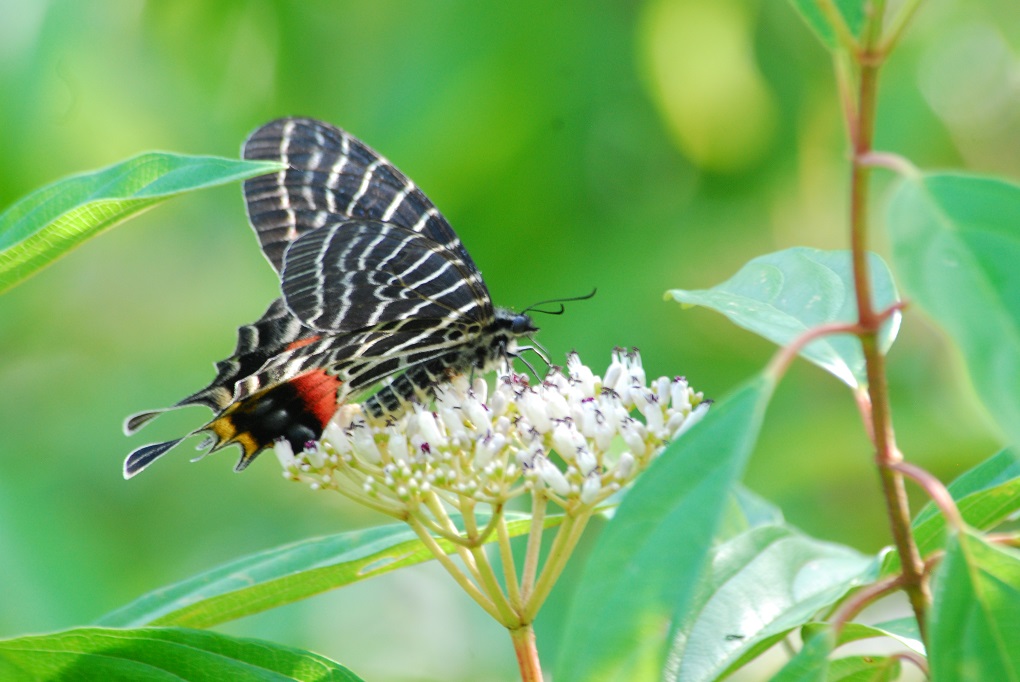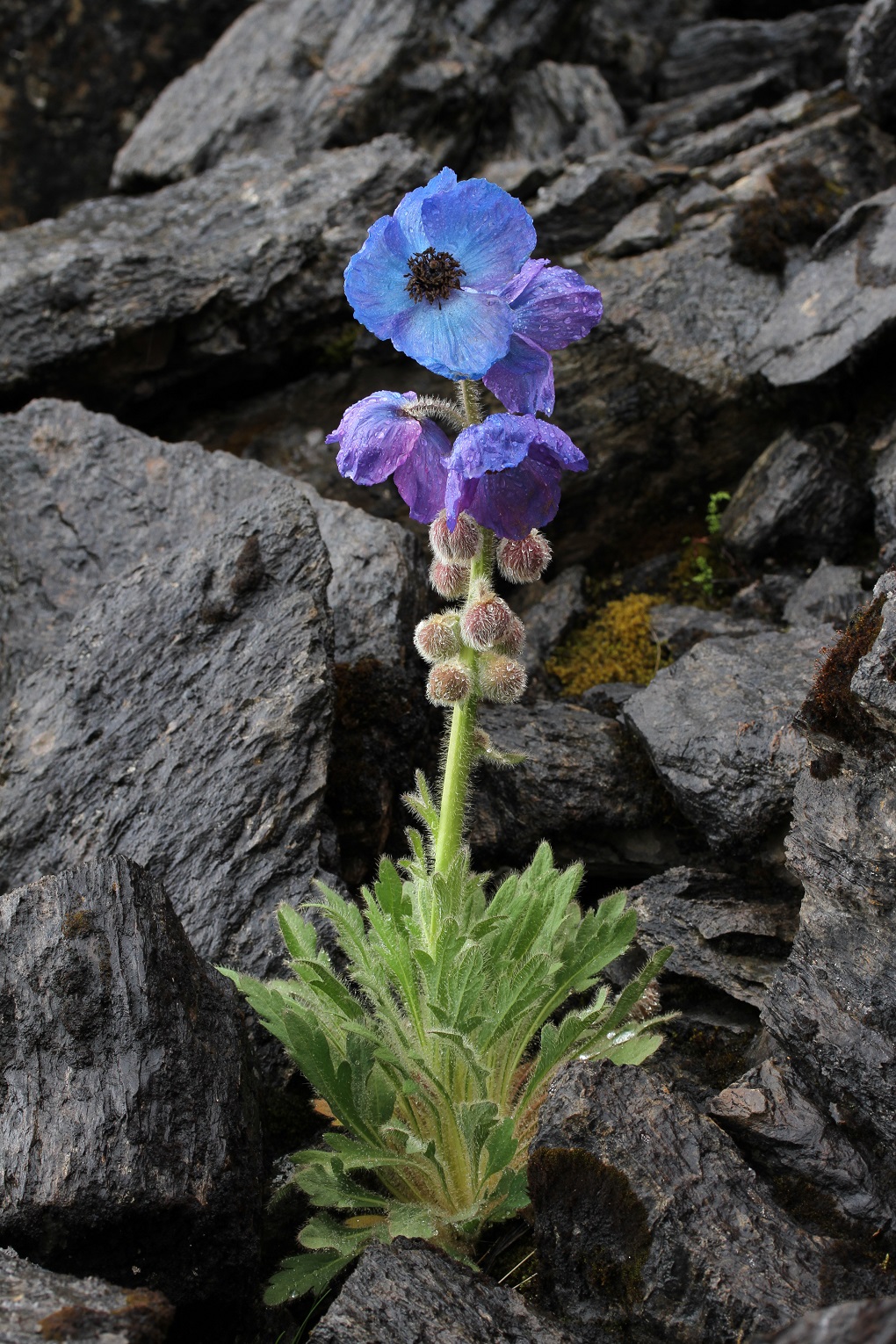A lack of focus on less visible but extremely diverse smaller plants and insects in Bhutan has left conservationists with little idea of the risks they face. Threatened by rapid urbanisation and climate change, these species – such as smaller birds, or wasps and bees, or lichens and fungi – find little space in the conservation strategy that the country has traditionally followed.
Bhutan conservation efforts
Situated in one of the most biodiverse regions in the world, Bhutan has focused on the protection of larger mammals – such as the tiger, snow leopard and elephant – that draw global attention and attract funding. This has left a serious knowledge gap on the diversity of insects and smaller plants that play an essential role in supporting wider ecosystems, as food for other creatures, pollinators and recyclers of nutrients.
Worldwide, more than 40% of insect species are declining and the rapid loss of plant species is undermining the future of our very existence, according to a major UN report published last year. In Bhutan, a global biodiversity hotspot, it becomes even more important to understand the diversity of the slugs, worms, snails, spiders, insects and plants that underpin these ecosystems.

Biodiversity hotspot
Wedged between China and India, Bhutan is known for its proactive initiatives to preserve biodiversity and is regarded as a world leader in environmental conservation. With more than half of its landmass designated as protected areas and a forest cover of 71%, Bhutan boasts an astounding diversity of flora and fauna, including the rare and endangered.
Bhutan covers subtropical forests and savannah grasslands in the southern foothills to alpine meadows in the north. With deep valleys and high mountains the small country is home to at least than 736 species of birds, 129 species of mammals and 5,369 species of plants, listed in the Biodiversity Statistics of Bhutan 2017.
Biodiversity is intricately linked to livelihoods in the country, especially of the rural population who make up two thirds of the population. Besides its deep roots in Bhutan’s history, culture and religion, biodiversity also plays an important role in enhancing food security, economic development and providing ecosystems services such as clean air and water.

Old data, limited research
Cheten Dorji from the College of Natural Resources (CNR) who has studied lady beetles, said, “Much of our current studies on insects are based on past studies that had been carried out by international experts and are complemented by a few field expeditions.”
Some knowledge has been gathered on flowering plants, but very little is known about lichens and mosses regarded as key players in maintaining the health of the ecosystem as they store moisture and provide nutrients.
Some recent studies have started collecting data on Bhutan’s lesser-known species, but they do not go far enough. A taxonomy study on bees, wasps, lady beetles, dragonflies, damselflies, beetles and molluscs was funded by the Bhutan Trust Fund for Environmental Conservation (BTFEC), in collaboration with the Naturalis Biodiversity Centre, Netherlands; the Bhutanese Ministry of Agriculture and Forests, and the Royal University of Bhutan.
Phurpa Dorji from the Gross National Happiness Commission – the powerful planning department of the government that has a focus on sustainable development – has collected data on bees and wasps. Unfortunately, he said, the study might have captured only 10% of the diversity of bees and wasps in the country. “We are yet to study their value in terms of interaction with the environment,” he said. Wasps act as natural controllers of pests and a third of overall pollination in the world is by insects of which bees are the most important pollinator.
Some scientific data has been gathered for some insects like butterflies and moths, particularly for threatened species, but for the majority their conservation status is not known.
Besides a lack of financial resources, the publication notes that diverse habitats and small population size have also contributed to its poor documentation.
Bhutan needs to act now to deal with this gap, according to researchers. “More focus needs to be given to science and studies now due to climate change and urbanisation, in fact we are lagging behind,” said Rinchen Yangzom, a botanist with the National Biodiversity Centre (NBC).
Climate change is affecting biodiversity
Researchers have observed that invasive plant species have taken over the native vegetation in Bhutan’s southern foothills bordering India, because of climate change and porous borders. As Bhutan gets warmer these invasive species will likely move up the hills and affect the harvests and livelihoods. While there is some understanding about invasive species of plants, nothing is known about invasive species of invertebrates other than recent pest outbreaks of giant African land snails and army worms.
A 2009 study published by the International Centre for Integrated Mountain Development (ICIMOD) study states that climate change increases the risk of extinction of species that have narrow geographic distributional range – like those found in Bhutan. Threatened and endemic species are the most vulnerable while invasive species from warmer regions consolidate at the expenses of existing local communities.
Limited funding constrains most organisations
BTFEC is one of the only institutes trying to uncover the country’s biodiversity. It has supported a few studies which led to the discovery of a new species of dragon fly and molluscs. “There is nothing like knowing the country’s biodiversity wealth and its usefulness,” said the BTFEC director, Pema Choephyel. “[But] at the moment we do conservation for the greater benefit and [focus on] the most obvious [issues] such as waste management, human wildlife conflict and watershed management.”
In reply to an email to senior forestry officer Tandin, at Bhutan’s Nature Conservation Division of the Department of Forests and Park Services, defended the country’s current approach. This division is the government’s focal agency for biodiversity conservation and management of protected areas.
“With the limited amount of resources in hand, the conservation strategy of focussing on iconic species is a right approach Bhutan has undertaken. Under this, we are able to cover a large number of species spanning over a huge area with limited resources. In addition, we are able to mobilize resources in the name of the iconic species,” he wrote. “Conservation measures are granted even to some species of plants and insects which are threatened,” he added. “For example, we are working on the conservation of critically endangered orchid species and a butterfly species. Nevertheless, as the plant, insect and other lesser-known taxa are very diverse, there is still dearth of information and knowledge and we need to scale up our efforts.”
The government has recently approved the Biodiversity Monitoring Protocol under which different types of flora and fauna will be monitored periodically, including insects, plants and other lesser-known species.
![<p>Blue-tailed Forest Hawk a.k.a. Lesser Blue Skimmer Orthetrum triangulare triangulare are among the lesser known varieties of insects in Bhutan [image: Alamy]</p>](https://dialogue.earth/content/uploads/2020/03/EMCAYY-e1593435802161.jpg)





![India, Uttarakhand, Haridwar, dam on the Ganga [image: Alamy]](https://dialogue.earth/content/uploads/2020/03/P1YATT-300x200.jpg)

![Young girls at a dug well in a remote village near Thano Bula Khan in Jamshoro Dirsticrt near Karachi. Kohistan is an arid region and suffering with severe droughts for many years [image by: Zulfiqar Kunbhar]](https://dialogue.earth/content/uploads/2018/03/Pic-01-300x200.jpg)